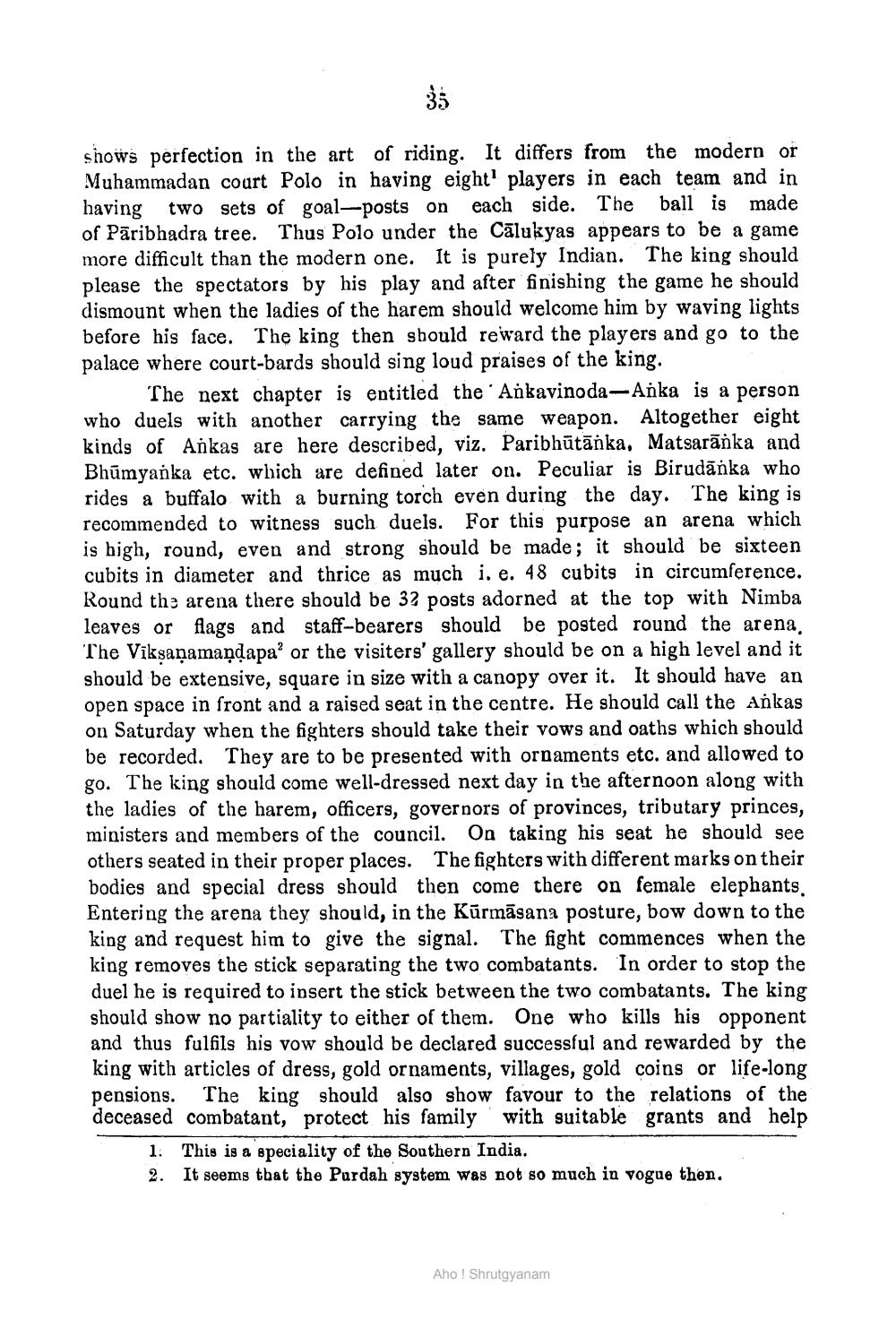________________
35
shows perfection in the art of riding. It differs from the modern or Muhammadan court Polo in having eight' players in each team and in having two sets of goal-posts on each side. The ball is made of Pāribhadra tree. Thus Polo under the Cālukyas appears to be a game more difficult than the modern one. It is purely Indian. The king should please the spectators by his play and after finishing the game he should dismount when the ladies of the harem should welcome him by waving lights before his face. The king then should reward the players and go to the palace where court-bards should sing loud praises of the king.
The next chapter is entitled the 'Ankavinoda-Anka is a person who duels with another carrying the same weapon. Altogether eight kinds of Ankas are here described, viz. Paribhūtānka, Matsarāńka and Bhūmyanka etc. which are defined later on. Peculiar is Birudānka who rides a buffalo with a burning torch even during the day. The king is recommended to witness such duels. For this purpose an arena which is high, round, even and strong should be made; it should be sixteen cubits in diameter and thrice as much i. e. 48 cubits in circumference. Round the arena there should be 32 posts adorned at the top with Nimba leaves or flags and staff-bearers should be posted round the arena The Viksanamaņdapa' or the visiters' gallery should be on a high level and it should be extensive, square in size with a canopy over it. It should have an open space in front and a raised seat in the centre. He should call the Ankas on Saturday when the fighters should take their vows and oaths which should be recorded. They are to be presented with ornaments etc. and allowed to go. The king should come well-dressed next day in the afternoon along with the ladies of the harem, officers, governors of provinces, tributary princes, ministers and members of the council. On taking his seat he should see others seated in their proper places. The fighters with different marks on their bodies and special dress should then come there on female elephants Entering the arena they should, in the Kūrmāsana posture, bow down to the king and request him to give the signal. The fight commences when the king removes the stick separating the two combatants. In order to stop the duel he is required to insert the stick between the two combatants. The king should show no partiality to either of them. One who kills his opponent and thus fulfils his vow should be declared successful and rewarded by the king with articles of dress, gold ornaments, villages, gold coins or life-long pensions. The king should also show favour to the relations of the deceased combatant, protect his family with suitable grants and help
1. This is a speciality of the Southern India. 2. It seems that the Purdah system was not so much in vogue then.
Aho ! Shrutgyanam




